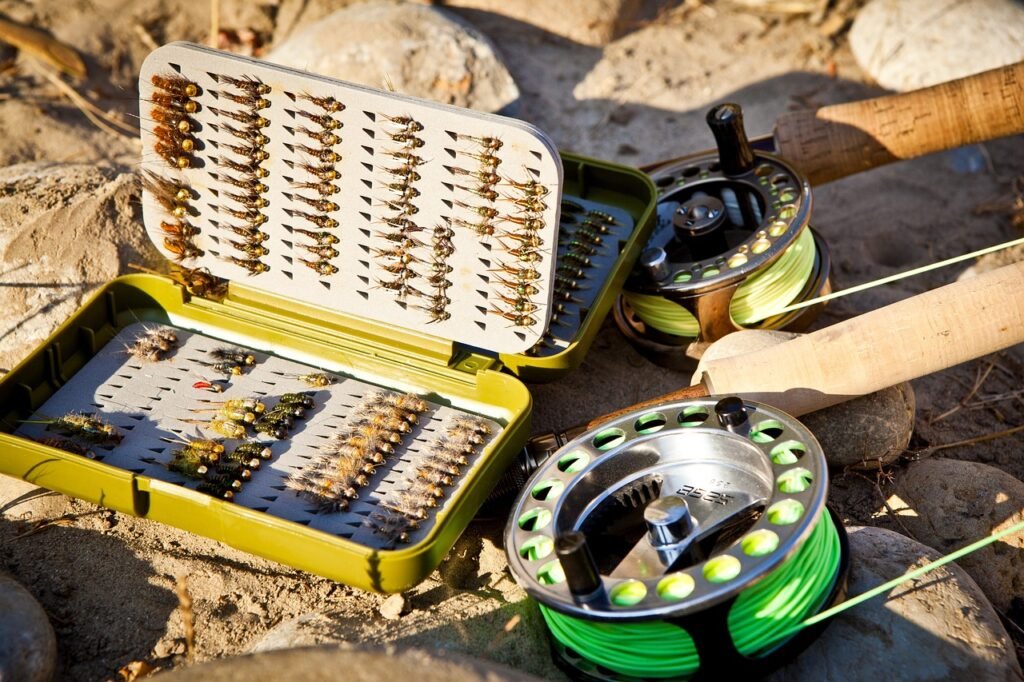Fly fishing is a captivating sport that requires skill, knowledge, and the right equipment. One crucial aspect of fly fishing is selecting the appropriate fly to entice the fish. In this blog post, we will explore the importance of fly selection, understand trout behavior and diets, and learn how to match the hatch. Additionally, we will discuss the different types of flies commonly used in fly fishing and highlight the best fly patterns for each season.
Why Do Flies Matter?
Flies are artificial imitations of insects that trout feed on. The right fly can make a significant difference in your fishing success. By selecting the appropriate fly, you can mimic the natural food sources of trout and increase your chances of a successful catch. Understanding the behavior and feeding habits of trout is crucial in choosing the right fly.
Understanding Trout Behavior and Diets
Trout are opportunistic feeders and their diets vary depending on the season and location. They primarily feed on insects such as mayflies, caddisflies, stoneflies, and midges. Understanding the life cycles of these insects and their availability in different seasons is essential for successful fly fishing.
Matching the Hatch
Matching the hatch refers to selecting a fly that closely resembles the insects currently hatching on the water. When insects hatch, they become vulnerable to hungry trout, making it an ideal time for fly fishing. By observing the water and identifying the insects present, you can choose a fly that imitates their size, shape, and color, increasing the likelihood of attracting trout.
Types of Flies
There are three main types of flies used in fly fishing: dry flies, nymphs, and streamers.
Dry Flies
Dry flies are designed to float on the water’s surface, imitating adult insects. They are commonly used when trout are actively feeding on the surface. Dry flies are effective during hatches when insects like mayflies or caddisflies emerge. They are available in various sizes and patterns, allowing anglers to match the specific insect species present.
Nymphs
Nymphs are flies that imitate the immature stages of insects, commonly found underwater. They are designed to sink and mimic the behavior of insects as they emerge. Nymph fishing is highly effective, as trout often feed on nymphs throughout the year. By choosing the right nymph pattern, you can imitate the insects trout are actively feeding on beneath the surface.
Streamers
Streamers are larger flies that imitate baitfish or other small aquatic creatures. They are typically used to target larger trout or to provoke aggressive strikes. Streamer fishing is most effective when trout are actively hunting or during low light conditions. The erratic movements of streamers trigger predatory instincts in trout, making them a popular choice for anglers.
Best Fly Patterns for Each Season
Now, let’s explore the best fly patterns for each season:
Spring
In spring, as the water warms up, trout become more active. Effective fly patterns during this season include Blue Winged Olives, March Browns, and Caddisflies.
Summer
During the summer months, terrestrial insects like grasshoppers, ants, and beetles become prevalent. Fly patterns such as Hopper Patterns, Ant Patterns, and Chernobyl Ants work well during this season.
Fall
In fall, trout start preparing for winter and become more aggressive. Effective fly patterns during this season include Woolly Buggers, Sculpins, and Midge Patterns.
Winter
Winter fly fishing can be challenging, as trout become less active. However, midges and small nymph patterns, such as Zebra Midges and Brassies, can still yield success during this season.
Choosing the right fly is a crucial element of successful fly fishing. By understanding trout behavior, diets, and matching the hatch, you can increase your chances of enticing trout to bite. Whether you’re using dry flies, nymphs, or streamers, selecting the appropriate fly pattern for each season is essential. So, grab your gear, study the water, and embark on an exciting fly fishing adventure!

